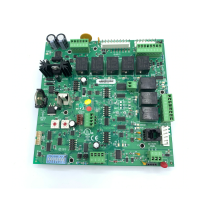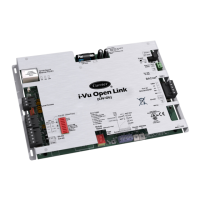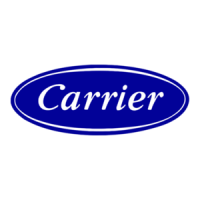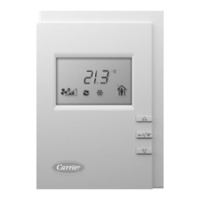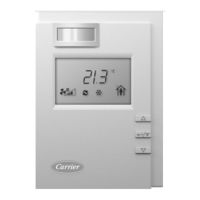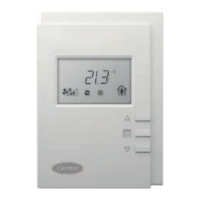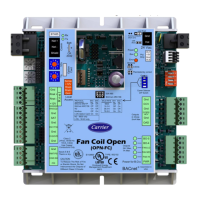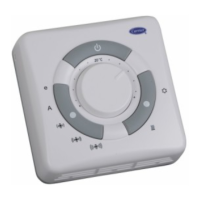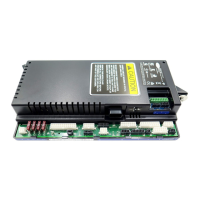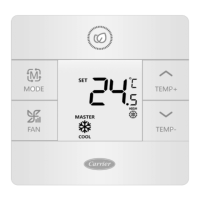Sequence of Operation
RTU Open v3 Carrier Proprietary and Confidential CARRIER CORPORATION ©2016
Integration Guide All rights reserved
26
Remote Occupancy
Remote occupancy
may be configured on any unused binary input channel. A typical application is a remote
contact, controlled by a third party, or an occupancy sensor to set the controller's occupied mode. The
function requires both an input configured for
, and
set to
to operate.
Once configured, the controller will operate in the occupied or unoccupied mode, as determined by the state of
the
input.
Fire Shutdown
Fire Shutdown
may be configured on Binary Input 5. A typical application involves a smoke detector or fire
shutdown contact, which, when active, immediately shuts down equipment operation.
Compressor Safety
Compressor Safety
may be configured on Binary Input 3. A compressor safety tripped indicator circuit is available
on most Carrier rooftop equipment.
A
is shown on
page >
tab >
and indicates that the
equipment requires attention.
Cooling, heating, and supply fan outputs are not interrupted except where the RTU Open is configured for Heat
Pump operation. When configured for Heat Pump, and in the heating mode, a compressor safety fault will cause
the available stages of electric heating to be enabled in place of mechanical heating.
Normal operation resumes when the compressor safety circuit is de-energized.
may be configured on any unused binary input channel. A typical application would be an airflow
switch, current sensing relay, or other device that provides a supply fan running verification.
Enabling this function displays the supply fan’s status on the equipment graphic.
If the controller loses fan status during operation, heating and cooling are disabled, the economizer damper (if
available) is closed, and an alarm for loss of status is indicated.
If the fan status is on when the controller is commanding the fan off, the unit remains in the off state. An alarm is
generated indicating that the fan is running when it should be off.

